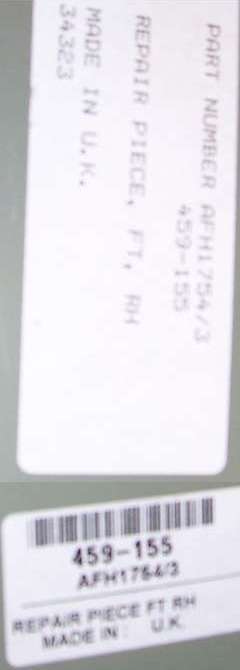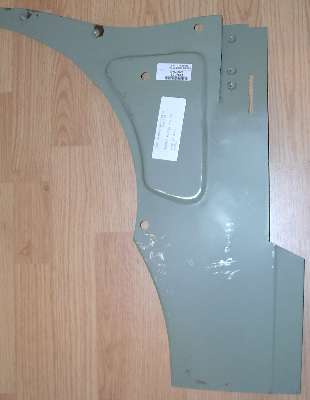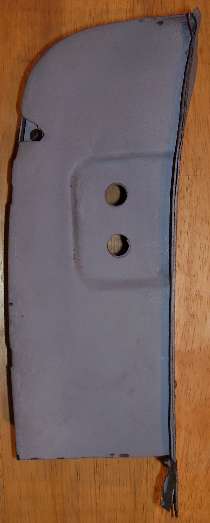The MGA With An Attitude
REPAIR PANEL - Inner Fender, Bad Form - FT-030


 At 07:50 PM 5/16/06, Terry Gaskin wrote::
At 07:50 PM 5/16/06, Terry Gaskin wrote::
"I just received this panel from a reputable Moss re-seller and would strongly NOT recommend purchasing this panel. The piece is not made correctly.
The portion near the top where the B-pillar attaches is former incorrectly. The bend is way too sharp and getting a B pillar to fit would be very difficult.
The bottom portion which is an extention of the inner fender and where the inner sill attaches to is formed incorrectly. This piece is supposed to be perpendicular to the ground (straight up and down). On the repair panel this portion curves inward at least 2 - 3 inches. The curve is caused by the way the manufacturer created the curved lip that continues the inner fender.



My home brew fix that I thought was cheesey is significantly better that the Moss repair panel. I came up with some good ideas that I think work well. Re-creating this panel on your own is the way to go -- it would be a lot easier than trying to make the patch fit."
At 06:56 PM 5/17/06, Terry Gaskin wrote:
"I've always assumed that this piece was supposed to be flat, except for the recessed portion in the center and the part where the B-pillar attaches. You can see how much of a bow that the entire piece has. I believe that this was created when the curved lip was made (which is an extension of the inner fender). The way I made my piece was by using a hammer form.--.that is sandwiching a flat piece of metal in-between two pieces of wood and hammering the lip into the desired shape. By doing this, you can create the flange yet keep the sheet metal flat. If you just try to bend the flange with a pair of pliers or the like, you will wind up introducing that bow into the piece. I know because the first time I tried making this panel I did just that and while the flange looked good, the panel now had a bow to it.
Since this piece has a good bow to it, you'd still think it could be easy to flatten out? Nope. The flange now acts as a stiffener to that entire part of the panel and the only way to flatten it out now is to make some relief cuts into the flange and bend the piece back to a flat shape. Overall, the amount of 'bend' is about 1 3/4" inches from true flatness. If you attached this with the bend, that would cause the inner sill to curve inward and make attaching the other inner sill structure very difficult. Plus, good luck getting the fender to attach at the bottom.
This "defect" to me is the deal breaker since the simple use of a hammer form would have resulted in a panel that was flat yet still had the proper flange. My hammer form took all of about 15 minutes to make out of MDF and worked perfectly.
A second problem is where the B-pillar would attach. On the original there is a nice shallow curve. On this piece there really isn't a curve just an angle where the supposedly "curved" portion begins and goes flat to the top of the piece.. I've attached a picture of a original B-pillar that shows the proper gentle curve. Comparing the two pieces which somehow need to be paired together shows how tough this would/could be. I'm not too sure how the replacement B-pillars are made, but rumor has it their suspect also. I know that an original would be difficult to attach.
In the end, as long as that recessed portion in the center of this piece is on the car, all the rest can be fabricated by the home mechanic with, IMHO, a lot less hassle than buying the repair piece. Without a bead roller of some kind, that is the only part of this panel that can't be home replicated with a welder and some sheet metal."
Terry Gaskin
|